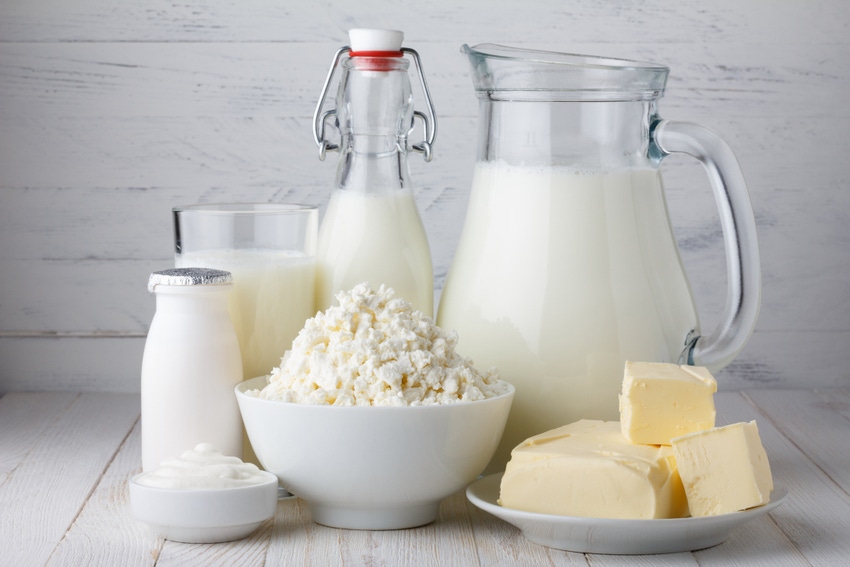Roughly half of overall export growth from greater sales of NDM and SMP to Southeast Asia.
September 4, 2020

U.S. dairy export volume on a solids basis was up 16% in the first seven months of 2020 and up 14% by value compared with the 2019 pace, according to the U.S. Dairy Export Council (USDEC).
The majority of the growth over the last fourth months came from increased shipments of nonfat dry milk (NDM) and skim milk powder (SMP) to Southeast Asia and whey products to China, USDEC reported. However, gains in these markets were partially offset by continued weakness in sales to Mexico, where overall export volume trailed last year by 18%.
July data showed that U.S. suppliers shipped 196,080 tons of milk powders, cheese, whey products, lactose and butterfat -- 22% more than last year. The value of all exports was $554.1 million, up 17%.
Since April, roughly half of the overall U.S. export growth has come just from greater sales of NDM and SMP to Southeast Asia, USDEC relayed.
In July, sales to the region were 30,103 tons, up 150% from last year, when the European Union was still aggressively selling down its intervention stockpile. During the month, U.S. shipments to Indonesia, the Philippines and Vietnam more than tripled. So far in 2020, U.S. sales to the region are 12,225 tons per month more than last year.
Led by Southeast Asia, data showed that total NDM/SMP exports were 75,294 in July, up 52% from last year. U.S. suppliers also found new customers in Egypt -- which bought 3,418 tons versus zero last July -- and China -- at 1,916 tons versus 461 tons last July. In contrast, volume to Mexico was down 6% year over year in July.
Meanwhile, USDEC said total whey sales to China continue to recover from the depressed levels of last year. Shipments to China in July were 17,642 tons, lower than the previous two months but more than double last year, when African swine fever decimated China’s hog herd and reduced demand for whey for feed use. In addition, sales to Southeast Asia reached an 11-month high in July, registering a 45% gain over a year ago.
USDEC reported that the strength of these two markets boosted total U.S. whey exports by 30% in July, topping 45,000 tons for the first time in almost two years. Volumes of high-protein whey protein isolate continued to move at a record clip, rising 48% in July on strong demand from China, the EU and Japan.
Cheese exports pulled back in July from the record volumes of June, as suppliers were more challenged to book deals when U.S. pricing was well above global prices. Export unit value in July was $326 per ton higher than in June. Overall shipments in July were 29,266 tons, up 5% from last year. Sales to South Korea more than doubled, but volumes to Australia, Saudi Arabia, the United Arab Emirates and Central America were down a combined 2,380 tons (39% lower). Shipments to Mexico were off 1% from last year.
According to USDEC, lactose exports were the lowest of the year (on a daily-average basis), with a sharp drop in sales to Mexico. Total volume was 32,538 tons, down 11% from last year. Exports to Mexico were just 2,192 tons, one-third of the record volume shipped last July but also the lowest total in four-and-a-half years. In contrast, China's purchases continued to increase, with a 27% gain versus a year ago.
Exports of milk protein concentrates remained significantly higher for the fourth straight year. Volume was up 34% in July, bringing the year-to-date growth rate to 32%. Milk protein concentrate volume so far in 2020 is the highest since 2014.
Among other products, shipments of butterfat more than doubled to a 17-month high, fluid milk sales were up 14%, exports of food preps/blends were up 1% and whole milk powder volume continued to lag, falling 11%.
On a total milk solids basis, U.S. exports were equivalent to 16.9% of U.S. milk solids production in July. In the first seven months of the year, exports represented 16.0% of production, up from 14.1% in the first seven months of 2019.
You May Also Like



